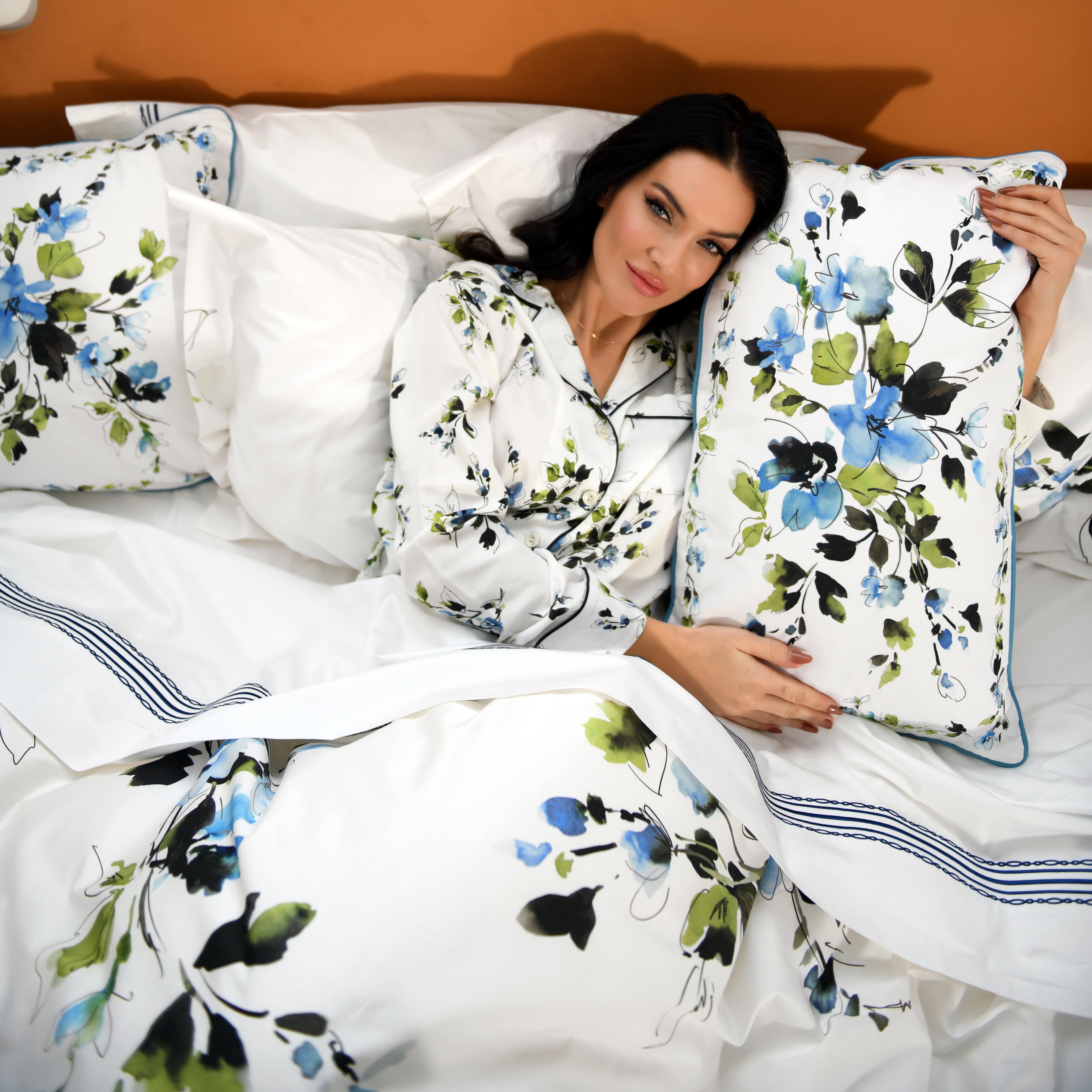What Is The difference Between Egyptian Cotton and Sateen Sheets?
Consider purchasing Egyptian cotton or sateen sheets if you want to treat yourself to some opulent linens!

Since sheets are in constant contact with the body, they can significantly impact how well and comfortably you sleep!
Sheets are just as important as a mattress, yet most consumers don't give them the same level of consideration.
A wide variety of sheets are available, each with its own set of possible benefits and drawbacks. Finding the correct product is vital, but so is choosing the right kind of sheets for your needs.
This article explains the difference between Egyptian cotton and sateen sheets. These well-liked choices might sometimes feel soft and sumptuous, but some nuances may make one more appealing to you than the other.
Understanding Egyptian Cotton
Egyptian cotton and Pima cotton come from the same genus, Gossypium, and are closely related.
Egyptian cotton is frequently hand-picked rather than mechanically harvested, helping to maintain the fibers' integrity but raising the cotton's price. Because Egyptian cotton uses untreated, extra-long-staple fibers, it can be spun into finer yarn, making it softer, smoother, and more durable than other types of cotton.
An increased thread count gives Egyptian cotton sheets excellent durability and makes them less susceptible to wear and tear. Finally, authentic Egyptian cotton is resistant to pilling, even after multiple washes.
Different weaves of Egyptian cotton sheets give them distinct textures and lengthen or shorten their lifespans.
- Percale
In a symmetrical design, the threads in a percale weave cross over and tuck under one another. You receive a sheet with a matte feel that is both strong and sharp.
- Pinpoint
This weave is more robust and stiffer because it has two overs and one under.
- Twill
With a diagonal design and varying thread counts above and below, twill is a soft, cozy fabric.
- Sateen
This opulent sateen is woven using a complex three over one under pattern, resulting in a denser and silkier smooth sheet.
Egyptian cotton sheets generally are breathable and can seal in heat when the weather gets chilly. However, the feel may vary depending on the weave. Some people may find the texture of Egyptian cotton sheets rough or stiff at first.
Given that it is one of the most widely used types of luxury bedding, Egyptian cotton is regarded as the bed sheet with the highest price. Egyptian cotton sheets may be more challenging to maintain because they are not shiny or easily draped.
The Benefits of Using Egyptian Cotton Sheets
- The fabric does not develop any annoying pilling or clumping.
- Sheets made from ELS fibers are exceptionally comfortable.
- Cannot be elongated, torn, or thinned out
- Moisture-wicking and breathable
- Maintains internal warmth in frigid weather
Understanding Sateen Sheets
Weave patterns like sateen, which are exceptionally smooth and resistant to wrinkles, are frequently found in high-end bed linens. While numerous collections are marketed as "sateen sheets," the term "sateen" can refer to sheets composed of various materials. You may use the cotton from almost any plant to make a sateen sheet. Because rayon is less expensive than cotton, it is occasionally used as a replacement in contemporary sateens.
Like regular satin, sateen has a smooth texture and a reflected gloss. It is a high-end weave. Sateen sheets are made of cotton instead of satin sheets, which are frequently woven from filament materials like silk or nylon.
As a result of its dense one yarn beneath, three or four threads above weave, sateen feels heavier and warmer than other cotton weaves, such as percale. The fabric's signature shine and softness result from the weave structure. As a result of its gentle texture, it is a good choice for people with hypersensitive skin.
Sateen sheets are often silky smooth and easy to care for; they rarely need to be ironed. Sateen sheets may usually be washed in a machine. Its soft, shiny surface and luxurious drape make sateen a popular choice.
The Benefits of Using Sateen Sheets
- Silky in the palm of your hand
- Glossy finish
- Gentler on the most delicate skin
- Having a high resistance to wrinkles in nature
- Drapes beautifully
Main Differences of Egyptian Cotton and Sateen Sheets
Since genuine Egyptian cotton is the best, most durable, and most scarce luxury fabric, it is also the most expensive type of bedding. While natural Egyptian cotton may cost over $500, cheap sheets with the "Egyptian cotton" label are likely to be phony or blended materials.
Due to the complex weaving, sateen sheets may cost more than other sheet linens. Sateen sheets can cost $50 to $500 or more, with the most expensive options being made of materials.
Egyptian cotton is renowned for its tenacity and, with proper care, can last for decades. Although most warranties only last five years, a top-notch Egyptian cotton producer must provide a generous return policy or guarantee on its bed linens.
Most sateen sheets last longer than other types. Sateen sheets have the potential to last for years if properly maintained. The standard warranty period is 12 months.
You can stop the fibers from wearing down by washing your Egyptian cotton frequently on a delicate cycle with gentle detergents and letting it air dry in a dark location away from direct sunlight.
In a conventional washing machine, Egyptian cotton sheets should only be dried at low temperatures since high temperatures could harm the fabric. Egyptian cotton that has been folded ought to be stored in a cool, dry area with lots of air, away from direct sunlight.
The same is true for sateen sheets, which can be laundered once weekly to every ten days in a standard machine using a mild detergent. Without any fabric softeners, they already have a good drape. Sateen can be dried using the dryer's no-heat and air-dry mode after washing. Sateen sheets should be stored away from direct sunlight in a dark, dry, and airy room.

